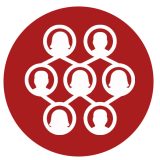There was a need in UNIBO to gather data and increase knowledge about the status of gender equality in science and education. The planning and production of the Gender Annual Report are expressions of a precise political will that, in the case of Alma Mater, is embodied in the recommendations and checks promoted by the Guarantee Committee, that were followed by the executive decision of the Board of Governors and the related financial support
Gathering gender disaggregated data regularly, quantitative and qualitative. Analysing these data in a dedicated Report so as to monitor gender and diversity in the organization
Problem (evidence)
Aims/objectives
The main aim is the analysis of the data on the composition of teaching staff, administrative staff and students by gender at the Alma Mater Studiorum Università di Bologna (UNIBO) as a whole, as well as broken down by Departments and Schools. The Gender Equality Report is the official document, published by UNIBO, that gathers all the data, indicating the situation of vertical and horizontal segregation and the glass ceiling effect.
Resources
Interdisciplinary team composed by experts of gender studies, statistics, social sciences.
Brief outcomes
UNIBO has 11 Schools, 33 Departments, about 87.000
students and about 6,000 academic and administrative staff. Since the gender annual report is a data collection regarding UNIBO as institution, it potentially benefits all UNIBO members, increasing their knowledge on the status of the art of the University regarding gender equality at all levels of the organization.
Key area
The governance bodies, key actors and decision-makers
Type of action
Data gathering and analysis
Organization
Alma Mater Studiorum – Universita Di Bologna
Higher education institution
Action level of implementation
Researchers/professors and technical and administrative staff, students
Implementation
An interdisciplinary team collected data mostly digitally (from UNIBO DataWarehouse), and partially manually to draft the Gender Equality Annual Report. The Gender Equality Annual Report was presented and approved in June 2017 by the Board of the University of Bologna, and was presented during a Conference organised by CUG held at UNIBO in December 2017. The Conference was addressed to teaching and administrative staff as well as external associations working on gender issues. Also, the Gender Equality Annual Report was presented in other 2 Conferences held in November and December 2017 at the University of Ferrara and of Padua, in order to spread the experience and data collected by UNIBO and to spread the methodology used by UNIBO to create the Gender Equality Annual Report. From December 2017, the Gender Equality Annual Report as well as two short versions of it (one in Italian and one in English) are available online in the official website of UNIBO. In the Gender Equality Annual Report published in 2018 has been inserted a new index that needed extra work performed by an interdisciplinary group composed by UNIBO academic and technical administrative staff, coordinated by the Guarantee Committee for Equal Opportunities, Employee Wellbeing and Non Discrimination at Work’s President (CUG). The new index has been named: “UGII: University Gender Equality Index”. Its aim is to allow different universities to compare their advancement towards gender equality. It expresses the distance between the actual gender equality level of the organization and the ideal situation of equality.
Challenges
The wide range of data to be collected and reported requires intensive work. Data on absences and leaves required specific analysis and to discuss the best way to present them in order to guarantee the anonymity of particular sensitive situations.
Coping strategies
From the first edition of the Gender Equality Annual Report (that was published in 2016), the UNIBO team has reduced the number of data and indicators focusing on the material ones and has improved the way to collect and represent them in a relevant form. Moreover, in 2017, the team undertook specific meetings with the internal unit devoted to collect data on absences and leaves, to discuss and agree on the best way to represent such data to preserve anonymity.
Tips/strategies – Lessons learnt
To collect all the required data, it is very important to include in the group that have to formulate the Gender Equality Annual Report the internal unit that is responsible to manage the DataWareHouse of the University as well as the internal unit responsible for the communication and graphic setting of the document. If there is not a unit dedicated to the DataWareHouse managing it is important to identify one person responsible in each unit (teaching, research, etc.) who will collect data concerning the unit where he/she works. Third, it is important to identify specific deadlines to obtain the data. Fourth, it is important to disseminate the document, both internally and externally. In particular, it is
important to make the document visible for the governing bodies in order to stimulate them to undertake specific action devoted to improving gender equality where it is the case.
More detailed Outcomes/Impact
In the long term, this action allows a continuous monitoring of the gender equality status in the organization, thus allowing key-actors and decision makers to better identify the issue that require to be addressed in a Gender Equality Plan (GEP).
Evaluation
An online questionnaire is available here, results will be elaborated at the end of 2019: https://www.UNIBO.it/fs/fs.aspx?surveyid=fc0143fca084b71bde135c6b5270b67
Reflection/what we would do differently
We could invest more in the discussion both internally and externally with other universities in order to agree on a set of indicators to be included in Gender Equality Annual Reports in order to stimulate benchmarking with other universities.
Unintended consequences
Another Italian University (Padua) declared that it has considered the Gender Equality Annual Reportof UNIBO as a guide to shape its Gender Equality Annual Report.


